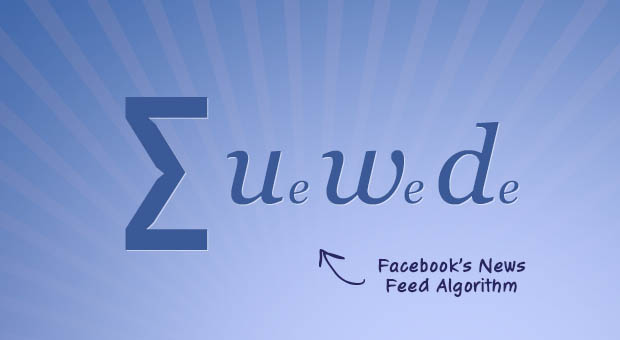Unless you’ve been living under a buzzword-free rock (and if that’s the case, please share your location so that others might seek refuge), you’ve undoubtedly heard about EdgeRank, the algorithm that Facebook uses to determine what users see in their News Feeds. While the method itself remains elusive, there is solid information that brands can use to navigate the News Feed and stay on top of fan engagement and in front of fan faces.
The Algorithm :: What is it?
Every piece of content or interaction on Facebook is known as an “edge,” from uploading a photo to joining an Event or Liking a status update.
EdgeRank accounts for three determining factors, known as “signals,” regarding posts themselves: affinity, weight, and time decay. Affinity reflects how friendly you are with your fans. Weight is a basic formula that is used to determine what types of content are more likely to be shared. Time Decay is a simple measurement of which content is the most fresh.
While there have been hints that Facebook may be introducing a new signal (or more) into the equation, this trifecta currently makes up the mix.
The Latest :: What’s the word?
In late September, Facebook announced an update to the EdgeRank algorithm, sending the digital marketing world into a tizzy as organic reach levels dropped suddenly and dramatically across the board. Phrases like “pay to play” flew across our screens rapid-fire, and brands began to panic over losses in revenue. The algorithm still remains elusive, but there are a few key changes that have become apparent.
Negative Feedback is now weighted more heavily. Users are now equipped with simple controls at the forefront that allow them to hide, block, and report posts. Because the objective of the updates is to combat spam pages, there is far more attention paid to this type of feedback from users. In addition, if pages have received a substantial amount of negative feedback in the past, they may have been hit even harder by the update.
The Popular Post Paradox creates new opportunities for negative feedback. Yes, that’s right. We’ve coined a new paradox. (While no one at Flightpath fancies himself or herself a philosopher, we’d argue that critical thinking skills and a love for alliteration go a long way.) Thanks to EdgeRank, the most popular posts make their way into the News Feeds of many a Facebooker who isn’t necessarily a fan of your content. While this is a great opportunity to make new friends, it’s also an easy way to get your posts hidden in the case that we don’t like what we see.
Status Updates Are the New Black. Once the updates went into affect and widespread suffering was reported from the depths of editorial teams across the globe, there was a single glimmer of hope: Status Updates. The oft-forgotten content type actually showed improvement in performance as a result of the algorithm, and brands that have strategically revitalized the status update have seen positive EdgeRank results.
Optimal Post Frequency hovers around once per day. Talk about high stakes-statuses. Many an analyst agrees: the most engagement is garnered when a brand posts once per day – and interactions begin to decrease substantially as frequency increases. It’s up to you to determine the best time of day to hit “Post,” as well as the ideal type of content to share. The good news? There’s plenty of room for experimentation.
The Implications :: What’s it to you?
EdgeRank exists to further personalize the experience of logging in to your virtual world by weed out irrelevant content and promoting pieces of interest. The fact is, except for the rare occasion on which a rapper launches a video game, we aren’t generally clamoring to canoodle with brands. EdgeRank recognizes what we are clamoring for, however, and rewards those pages who are posting killer content, at the right frequency, at the ideal time of day. If you’re not using EdgeRank Checker already, create your account and get moving – many of the optimizations that can be made are easily measure and reported within the tool, which also allows for real-time monitoring.
At the end of the day, I’m still subjected to far too many baby pictures (and when will we start punishing college buddies for gratuitous sorority poses?), but technology has only come so far.
